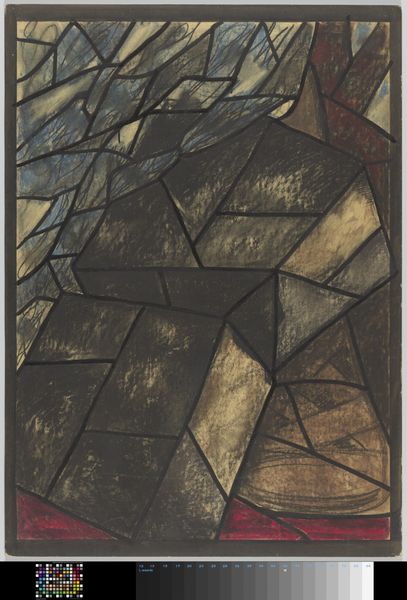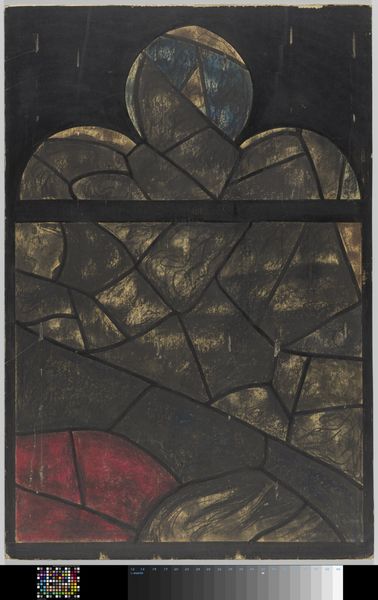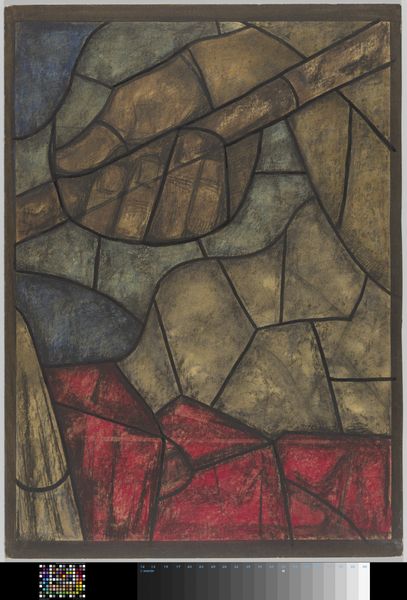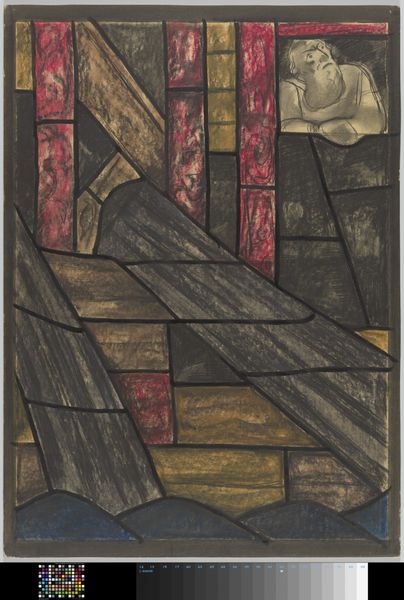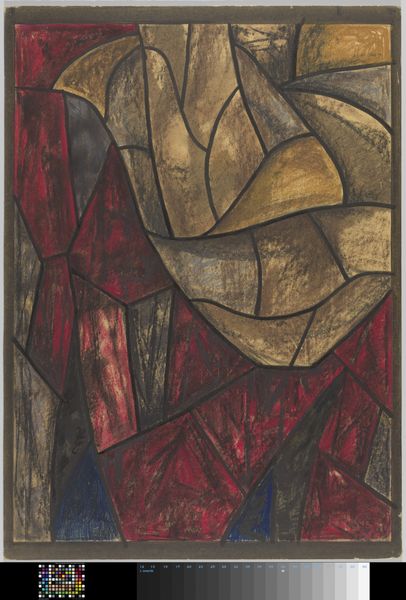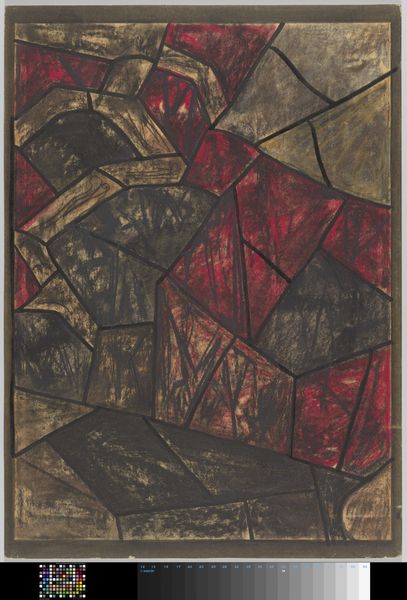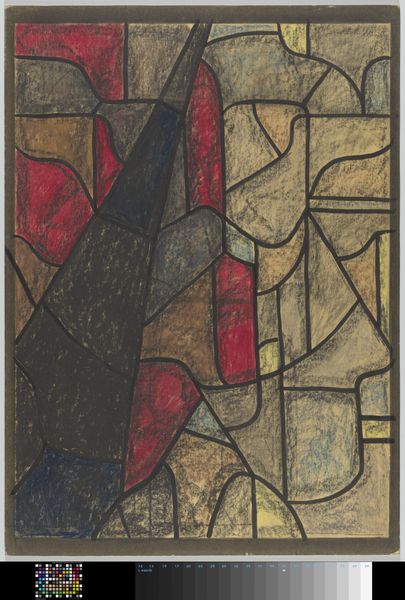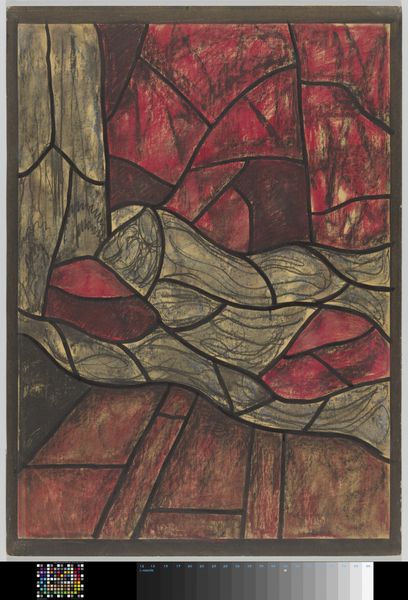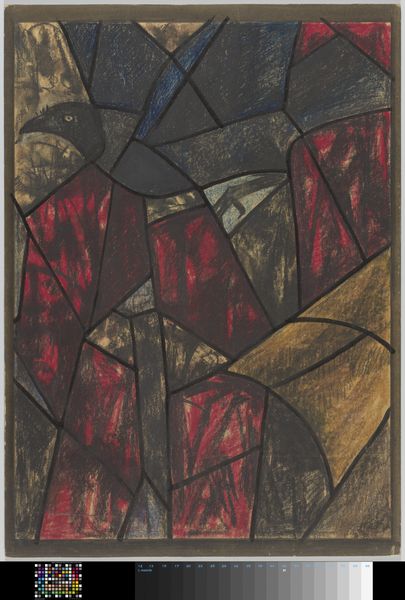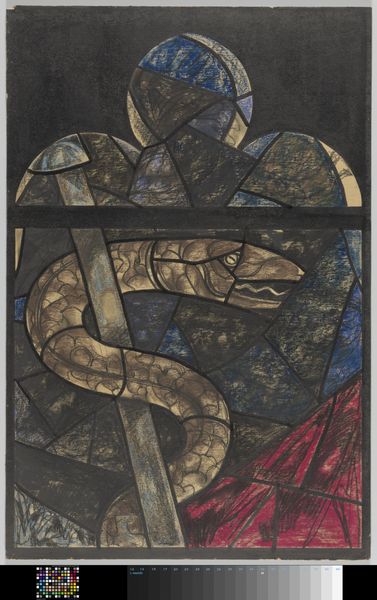
Ontwerp voor raam in het Noordertransept in de Dom te Utrecht c. 1934
0:00
0:00
Dimensions: height 1107 mm, width 809 mm
Copyright: Rijks Museum: Open Domain
Editor: This is Richard Nicolaüs Roland Holst's "Ontwerp voor raam in het Noordertransept in de Dom te Utrecht," made around 1934. It’s a mixed media piece: stain, tempera, drawing, probably a study for a stained-glass window. It feels quite somber to me, yet the bold geometric forms suggest underlying strength. What do you see in this piece, especially considering the period in which it was created? Curator: This design resonates with the anxieties and shifting spiritual landscapes of the interwar period. Holst, deeply influenced by socialist ideals and a search for spiritual meaning, creates a tension here. The geometric forms, reminiscent of Art Nouveau but also hinting at a modernist breakdown, could represent a fracturing of traditional beliefs, particularly considering the rise of fascism. The choice of red, traditionally associated with sacrifice but also with socialism, is interesting, isn't it? Where do you think Holst might be positioning himself in this ideological landscape? Editor: That’s a compelling perspective. I hadn't thought about the red as symbolic of both sacrifice and socialism. Perhaps he's using religious imagery to express social concerns, a commentary on the suffering of the working class? Curator: Precisely! Think about the context: the economic depression, the rise of extremist ideologies. Holst's design might be an elegy for lost ideals, a yearning for social justice cast within the framework of religious iconography, or perhaps a commentary on how the church can protect against rising authoritarianism. How does knowing that context change your initial feeling of somberness? Editor: It adds depth, definitely. It transforms the somber mood into something more complex, a mixture of lament and quiet resistance. Curator: Absolutely. By understanding the intersection of social and political anxieties of the time with Holst's artistic language, we see how deeply embedded even a seemingly religious design can be in broader cultural struggles. Editor: This has completely shifted my perspective on the piece. Thanks for pointing out all those layers! Curator: The beauty of art lies in its capacity to hold multiple truths, revealing new meanings as we deepen our understanding of the context surrounding its creation.
Comments
No comments
Be the first to comment and join the conversation on the ultimate creative platform.
